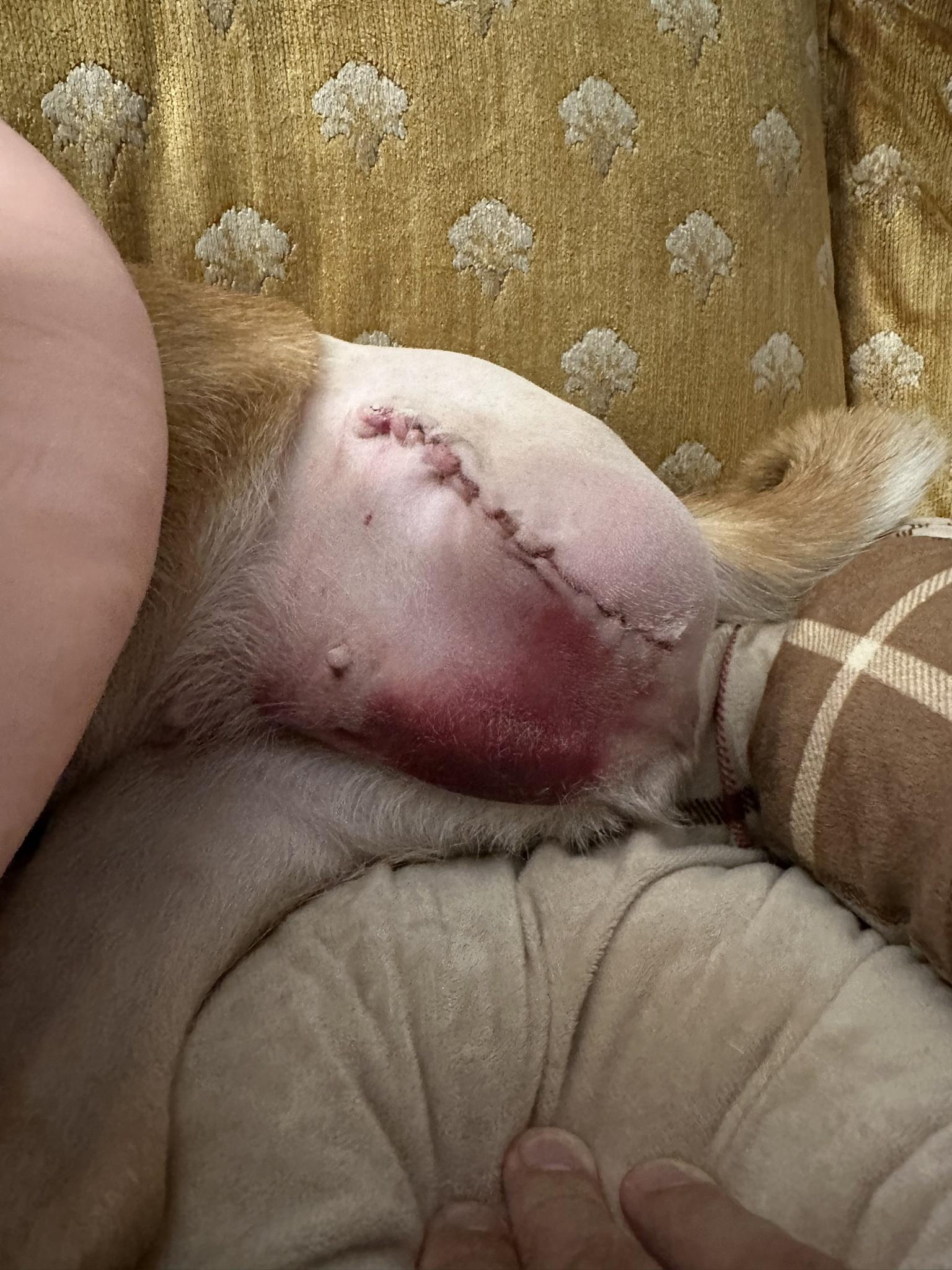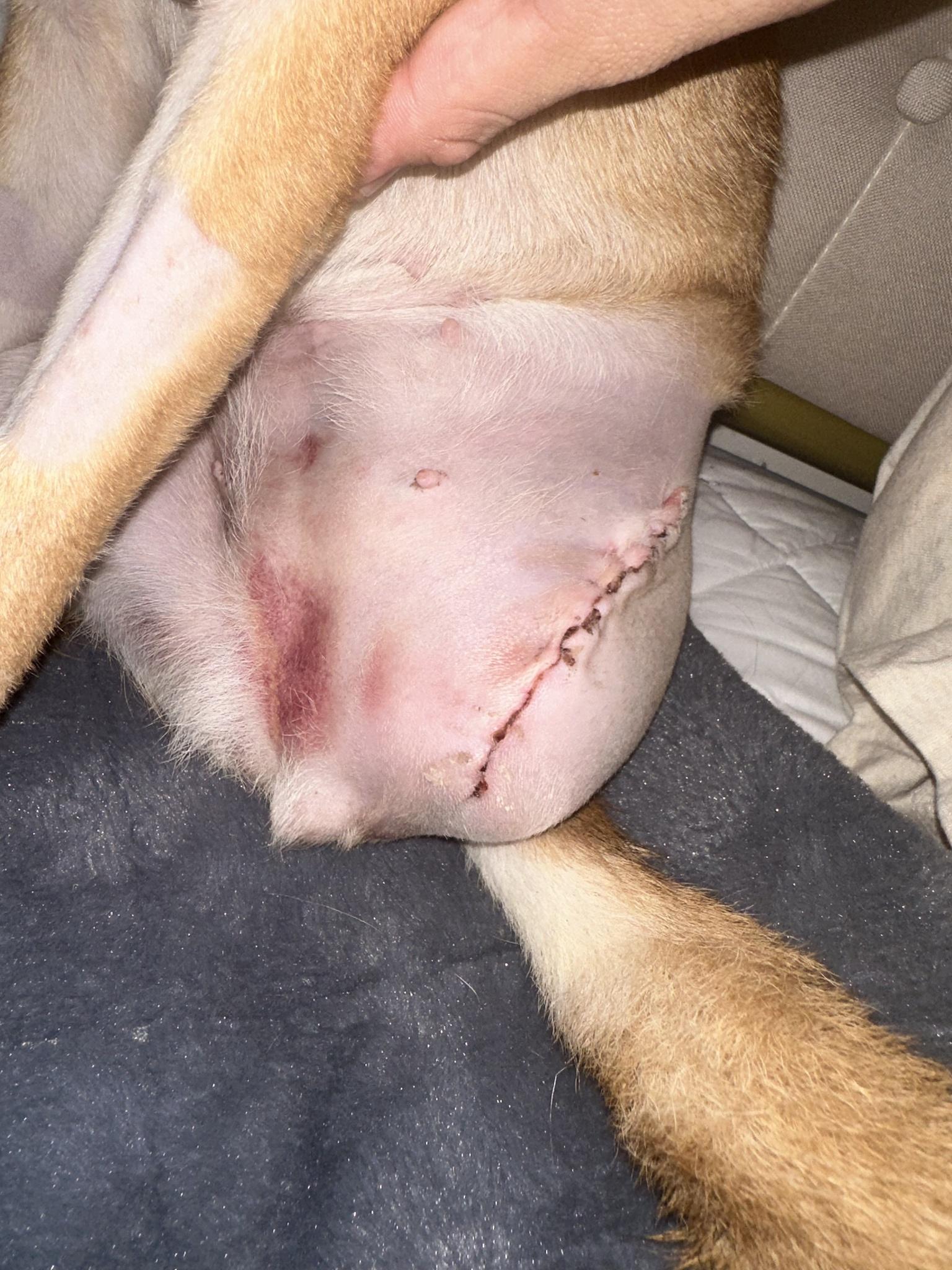Tripawds Three Legged Dog & Cat Forum Archives
Tripawds is your home to learn how to care for a three legged dog or cat. Explore 17+ years of forum archives for stories and answers to questions about dog leg amputation, and cat amputation recovery. Enjoy fresh discussion and connect with members in the new Tripawds Support Circle.
Join The Tripawds Community
Register your free account to join the Tripawds Support Circle. Connecting with members and getting the support you need is now easier than ever with the Circle app!
Easy Photo Upload
Private Messaging
Subscribe to Topics.
Live Chat and much more!
Forums Locked: Search archives for answers & join Tripawds Support Circle to keep discussion going!
One of the most worrisome things about a new Tripawd's recovery is constantly wondering: is my cat or dog's amputation bruise normal or not? Today let's look at some before and after photos of bruising. Hopefully these will put your mind at ease.
The Cause of a Cat or Dog's Amputation Bruise

First you should know that bruising is normal. It's a side effect of amputation surgery. A big bruise happens because skin, muscles and tissues have been cut in order to remove the bad leg.
The amputation site becomes traumatized by the leg removal, and bruising appears soon after surgery.
A cat or dog's amputation bruise looks worse before it gets better. The day after surgery, skin around the incision area will start turning into an angry, dark purplish color. Then for about the next five days, the bruises will lighten into shades of green, yellow, and light brown.
A dog's amputation bruise looks bad, but don't panic. But most bruises will fade over the next two weeks.
How to Tell if Your Dog's Amputation Bruise is Normal or Not
Does this look concerning or just bruising?


There's not much you need to do about the bruising within the first three days unless your vet instructs you to do otherwise. Gentle heat and ice therapy can help minimize discomfort 72 hours after surgery. According to animal massage expert Wendy Richardson, you should wait until three days after amputation surgery to apply heat and ice therapy.
- First, apply heat for 3 minutes. Heat will loosen the fibers and increase blood flow to the area. Always test heat before application.
- Next, apply cold for 2 minutes. Ice reduces swelling and inflammation. Crushed ice can be used, wrapped in a thin towel for the cold application.
It’s even better today. Almost no red and a lot of the area is a very faint yellow now.


Signs The Incision Area is NOT Normal Include
It's a Tripawd's amputation wound care that's more important. But you don't have to obsess or go overboard to keep it sterile. Just keep the wound area clean, don't bandage or apply topical medications unless your vet tells you to.
Most amputation incisions need minimal care during recovery. But you do need to watch for signs that something is not normal, such as:
Foul smelling discharge leaking from the incision.
Is there any gross, cloudy, or stinky fluid draining from the incision? Normal drainage (a "seroma") has a pink color, but is clear and doesn't smell. If you suspect the discharge is not normal tell your vet.
Missing sutures or staples.
If sutures or staples fall out, this might be a sign that your dog's incision is infected. The skin cannot heal, so the sutures or staples fall out. Also, if you see a wide gap (larger than ¼ inch) between the wound or tissue sticking out from the wound, call your vet immediately.
Excessive fluid drainage
Again, this is probably a seroma, which is a combination of blood and bodily fluid buildup that drains at the incision site. Seromas usually aren’t serious. Sometimes they need draining in a vet’s office. But tell your vet your dog is having one, just to be safe. And do your best to prevent a seroma
by keeping your dog calm for at least a week after amputation. To much activity can ramp up the immune system and lead to excess fluid buildup.
Learn More About Your Dog's Amputation Care

1 Guest(s)

 Log In
Log In Members
Members

 Read the original blog post
Read the original blog post



 Offline
Offline








